Urukagina: Ruler Of Sumerian City Of Lagash And His Reforms To Combat Corruption
A. Sutherland - AncientPages.com - Urukagina (or Uruinimgina), an illegitimate and controversial claimant to power, ruled only some years (c.2352 - 2342 BC or c. 2700 BC, in older chronologies). He was the last king of the first dynasty of Lagash and he came to power divinely – as he claimed - when Ningirsu, warrior of Enlil, granted him the kingship of Lagash.
![Fragment of an inscription of Urukagina; it reads as follows: "He [Uruinimgina] dug (…) the canal to the town-of-NINA. At its beginning, he built the Eninnu; at its ending, he built the Esiraran." (Musée du Louvre)](https://www.ancientpages.com/wp-content/uploads/2017/05/Urukaginainscription11.jpg) Fragment of an inscription of Urukagina; it reads as follows: "He [Uruinimgina] dug (…) the canal to the town-of-NINA. At its beginning, he built the Eninnu; at its ending, he built the Esiraran." Image credit: Marie-Lan Nguyen - Public Domain
Fragment of an inscription of Urukagina; it reads as follows: "He [Uruinimgina] dug (…) the canal to the town-of-NINA. At its beginning, he built the Eninnu; at its ending, he built the Esiraran." Image credit: Marie-Lan Nguyen - Public Domain
Urukagina’s s reign was in the time when the political and economic situation in Lagash was unstable, after the downfall of his corrupt predecessor, Lugalanda. In Sumer, there was at the time political chaos and economic crisis, and wars only worsened the situation.
The city of Lagash was nearly paralyzed by a corrupt civil bureaucracy and tax money went directly to private pockets of the richest people. Civil inspectors often confiscated the property they inspected. If a man divorced his wife, he paid a tax; if a perfumer made an oil preparation, he paid a tax; if a man died – he also paid the tax, sometimes well over half his estate went to the palace, along with a series of “gifts” for the bureaucratic administrators.
As S.N. Kramer states in his book “The Sumerians”, by 2400 BC, “debtors and tax resistors languished in prisons beside common criminals…” It was time to change this situation with a series of rulers and lawgivers such as Ur-Nammu and Hammurabi.
Eagle of Lagash. Image credit: Mbzt - source
For now, it was Urukagina, who had to react. The citizens of Lagash decided to overthrow the rulers and install the reformer king they trusted, namely, king Urukagina, who reformed the tax system, curtailed the corruption and terrible abuses of ordinary people by officials.
He canceled the taxes, fired all corrupted tax collectors. He also stopped at least temporarily the devastating influence of the powerful priests.
As Paul Kriwaczek points out in his great book “Babylon: Mesopotamia and the Birth of Civilization”,
“… the priesthood was not innocent of corruption either. A priest could enter a poor man’s garden and cut down his trees or take away his fruit at will. Nothing was as certain as death and taxes.
When a citizen died, the bereaved had to pay for the privilege of burying the body: seven jars of beer and 420 loaves of bread; the priest got one-half gur – over 60 liters – of barley, a garment, a bed, and a stool; the assistant priest received 12 gallons of barley. Urukagina claimed to have put an end to all this…”
While Urukagina focused on his reforms, known to us today from six inscriptions (three of them are almost identical), the kingdom of Lagash was systematically attacked by its deadly enemies in Umma and its king Lugalzagesi. Urukagina was not interested in wars outside Sumer and those at home, which resulted in the weakening of Lagash and its ability to maintain its borders and protect the people.
Urukagina - considered by many, the first reformer in the history of humanity and the leader of the social movement - ruled only for eight years in the late twenty-fourth century BC, before he was thrown out of the throne by the Umma king, Lugalzagesi, who sacked Lagash, burned down the city’s holy temples and massacred his people.
“…The ruler of Umma has set fire to the temple of Antasurra; he has carried away the silver and the lapis lazuli… He has shed blood in the temple of the goddess Nanshe; he has carried away the precious metal and the precious stones… The Man of Umma, by despoiling Lagash, has committed a sin against the god Ningirsu…
May the hand that he dared to raise against Ningirsu be cut off. There was no fault in Urukagina, King of Lagash. May Nisaba, the goddess of Lugalzagesi, ruler of Umma, make him bear his mortal sin upon his neck…” (Kriwaczek, P. Babylon: Mesopotamia and the Birth of Civilization).
These were seemingly prophetic words; according to later Babylonian versions of Sargon's inscriptions, Sargon of Akkad captured Lugalzagesi after destroying the walls of Uruk and led him in a neck-stock to Enlil's temple in Nippur.

Urukagina Liberty cone. Cuneiform Digital Library Initiative.
It is believed that the ruler, Urukagina fled to the town of Girsu, and not much more is known about him. It’s not known for certain how he died and it is also unclear whether he was really a good person and righteous ruler.
“Was the return of property to the temple really an attempt to re-establish the role of the priesthood in Lagash society or was it that, by appointing himself and his family to positions within the temple hierarchy, as he did, Urukagina managed to feather his own nest while giving the appearance of altruism and generosity? Kriwaczek asks in his book.
Was Urukagina’s only intention was to help poor and unfairly treated people of Lagash?
Was it right that
“…the blind one who stands in ..., his bread for eating is one loaf, 5 loaves of bread are his at midnight, one loaf is his bread at midday, and 6 loaves are his bread in the evening and
“…60 loaves of bread, 1 mud vessel of beer, and 3 ban of barley are for the person who is to perform as the sagbur priest…”?
Can we say that his reforms were true or rather false? Did he perhaps give an appearance of generosity for his own benefit?
Particularly his two decrees that survived are interesting. The first of them published and translated by Samuel Kramer in 1964, states that Urukagina abolished the former custom of polyandry (a marriage that includes more than two partners) in his country, on pain of the woman taking multiple husbands being stoned with rocks upon which her crime is written.
Another Urukagina’s decree makes us wonder, too. It states that “if a woman says [text illegible…] to a man, her mouth is crushed with burnt bricks.” No comparable decrees from Urukagina, addressing penalties for adultery by men, have survived.
Many researchers have suggested that this may be the first written evidence of the patriarchal silencing of women.
Written by – A. Sutherland AncientPages.com Staff Writer
Copyright © AncientPages.com All rights reserved. This material may not be published, broadcast, rewritten or redistributed in whole or part without the express written permission of AncientPages.com
Expand for referencesReferences:
N. Kramer, The Sumerians
Kriwaczek, Paul. Babylon: Mesopotamia and the Birth of Civilization
A.T Smith, The Political Landscape: Constellations of Authority in Early...
O. Doyle, The Social Meanings of Money and Property
More From Ancient Pages
-
 Drought Encouraged Attila’s Huns To Attack The Roman Empire – New Study
Archaeology | Dec 15, 2022
Drought Encouraged Attila’s Huns To Attack The Roman Empire – New Study
Archaeology | Dec 15, 2022 -
 Llyn Y Dywarchen – Enigmatic Lake Shrouded In Myth And Legend
Featured Stories | Jun 29, 2021
Llyn Y Dywarchen – Enigmatic Lake Shrouded In Myth And Legend
Featured Stories | Jun 29, 2021 -
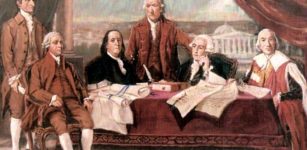 On This Day In History: Treaty Of Paris Was Ratified – On January 14, 1784
News | Jan 14, 2017
On This Day In History: Treaty Of Paris Was Ratified – On January 14, 1784
News | Jan 14, 2017 -
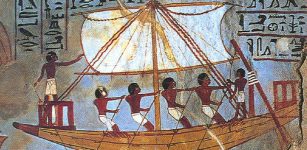 Mysterious Sherbrooke Stones – Did Africans Visit North America 2,500 Years Ago?
Artifacts | Nov 23, 2017
Mysterious Sherbrooke Stones – Did Africans Visit North America 2,500 Years Ago?
Artifacts | Nov 23, 2017 -
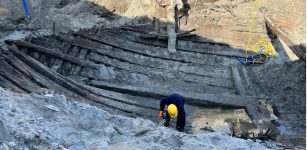 Remarkable 700-Year-Old Ship Found In Estonia Is One Of The Most Important Archaeological Discoveries In Europe – Scientists Say
News | Apr 22, 2022
Remarkable 700-Year-Old Ship Found In Estonia Is One Of The Most Important Archaeological Discoveries In Europe – Scientists Say
News | Apr 22, 2022 -
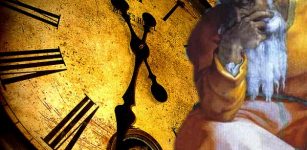 Did Ancient Civilizations Possess Knowledge Of Time Travel?
Ancient Technology | Sep 17, 2018
Did Ancient Civilizations Possess Knowledge Of Time Travel?
Ancient Technology | Sep 17, 2018 -
 New Hope To Finally Find Tomb Of Alexander The Great
Archaeology | Mar 6, 2019
New Hope To Finally Find Tomb Of Alexander The Great
Archaeology | Mar 6, 2019 -
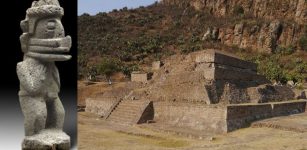 Who Built The Mysterious Huapalcalco Pyramid – Mexico’s Smallest Pyramid?
Featured Stories | Mar 29, 2018
Who Built The Mysterious Huapalcalco Pyramid – Mexico’s Smallest Pyramid?
Featured Stories | Mar 29, 2018 -
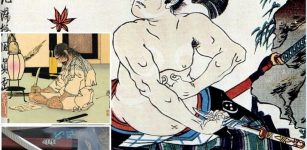 Seppuku: Ancient Suicide Ritual That Guaranteed Honorable Death Instead For Life In Shame
Ancient Traditions And Customs | Mar 8, 2018
Seppuku: Ancient Suicide Ritual That Guaranteed Honorable Death Instead For Life In Shame
Ancient Traditions And Customs | Mar 8, 2018 -
 Precious Lost Ancient Book Of Wisdom Could Solve Biblical Mysteries
Ancient Mysteries | Nov 26, 2018
Precious Lost Ancient Book Of Wisdom Could Solve Biblical Mysteries
Ancient Mysteries | Nov 26, 2018 -
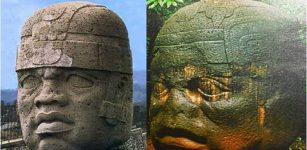 The Olmecs – Who They Were, Where They Came From Still Remains A Mystery
Civilizations | Feb 19, 2015
The Olmecs – Who They Were, Where They Came From Still Remains A Mystery
Civilizations | Feb 19, 2015 -
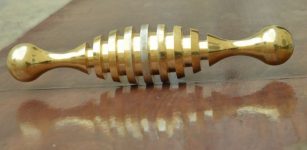 History Mystery: Gold Tool Found In Jerusalem Cemetery Baffles
Archaeology | Dec 25, 2015
History Mystery: Gold Tool Found In Jerusalem Cemetery Baffles
Archaeology | Dec 25, 2015 -
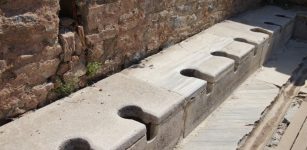 First Pay Toilets Were Invented In Ancient Rome In 74 A.D.
Ancient History Facts | Jan 29, 2017
First Pay Toilets Were Invented In Ancient Rome In 74 A.D.
Ancient History Facts | Jan 29, 2017 -
 LIDAR Discovers Mysterious Maya Underground Chamber In The Rainforest
Archaeology | Jul 22, 2024
LIDAR Discovers Mysterious Maya Underground Chamber In The Rainforest
Archaeology | Jul 22, 2024 -
 On This Day In History: The Battle of Salamis – Sep 22, 480 BC
News | Sep 22, 2015
On This Day In History: The Battle of Salamis – Sep 22, 480 BC
News | Sep 22, 2015 -
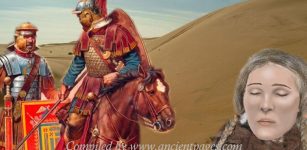 Mysterious White Chinese May Be Related To Ancient Roman Soldiers – Did Marcus Crassus’ Army Settle Down In The Gobi Desert?
Civilizations | Dec 29, 2017
Mysterious White Chinese May Be Related To Ancient Roman Soldiers – Did Marcus Crassus’ Army Settle Down In The Gobi Desert?
Civilizations | Dec 29, 2017 -
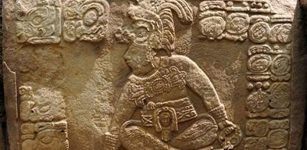 On This Day In History: Maya King Yuknoom Ixquiac ‘Jaguar Paw Smoke’ Assumes The Crown Of Calakmul – On Apr 3, 686
News | Apr 3, 2017
On This Day In History: Maya King Yuknoom Ixquiac ‘Jaguar Paw Smoke’ Assumes The Crown Of Calakmul – On Apr 3, 686
News | Apr 3, 2017 -
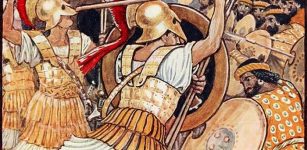 On This Day In History: Battle Of Marathon Was Fought – On Sep 12, 490 BC
News | Sep 12, 2016
On This Day In History: Battle Of Marathon Was Fought – On Sep 12, 490 BC
News | Sep 12, 2016 -
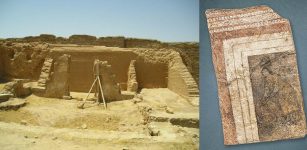 Has World’s Oldest Image Of Virgin Mary Been Discovered In Dura-Europos Church?
Archaeology | Mar 17, 2017
Has World’s Oldest Image Of Virgin Mary Been Discovered In Dura-Europos Church?
Archaeology | Mar 17, 2017 -
 Lost Ancient Extraterrestrial Knowledge And The Ignorance Of Modern Man
Ancient Mysteries | Jul 30, 2020
Lost Ancient Extraterrestrial Knowledge And The Ignorance Of Modern Man
Ancient Mysteries | Jul 30, 2020

